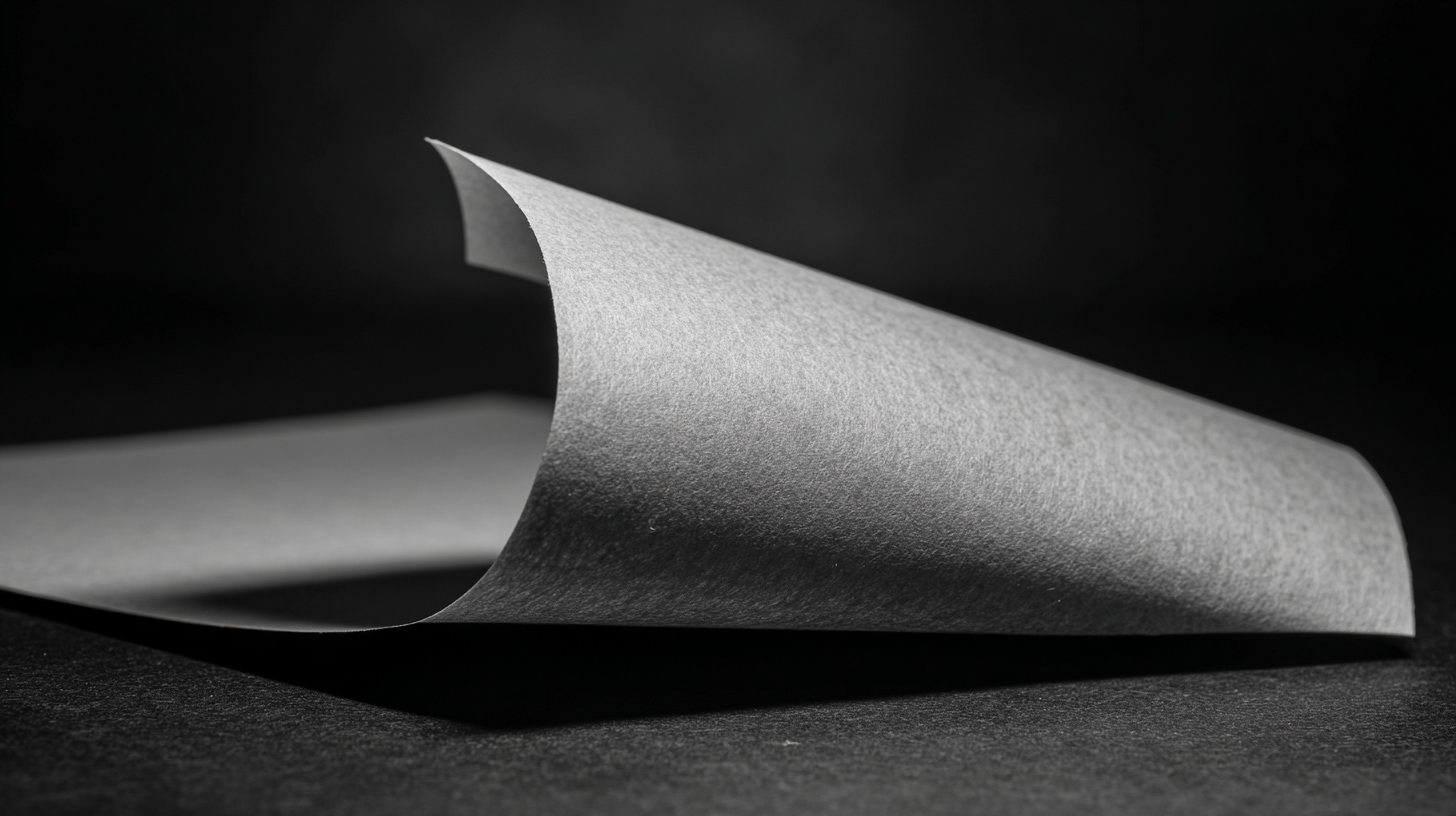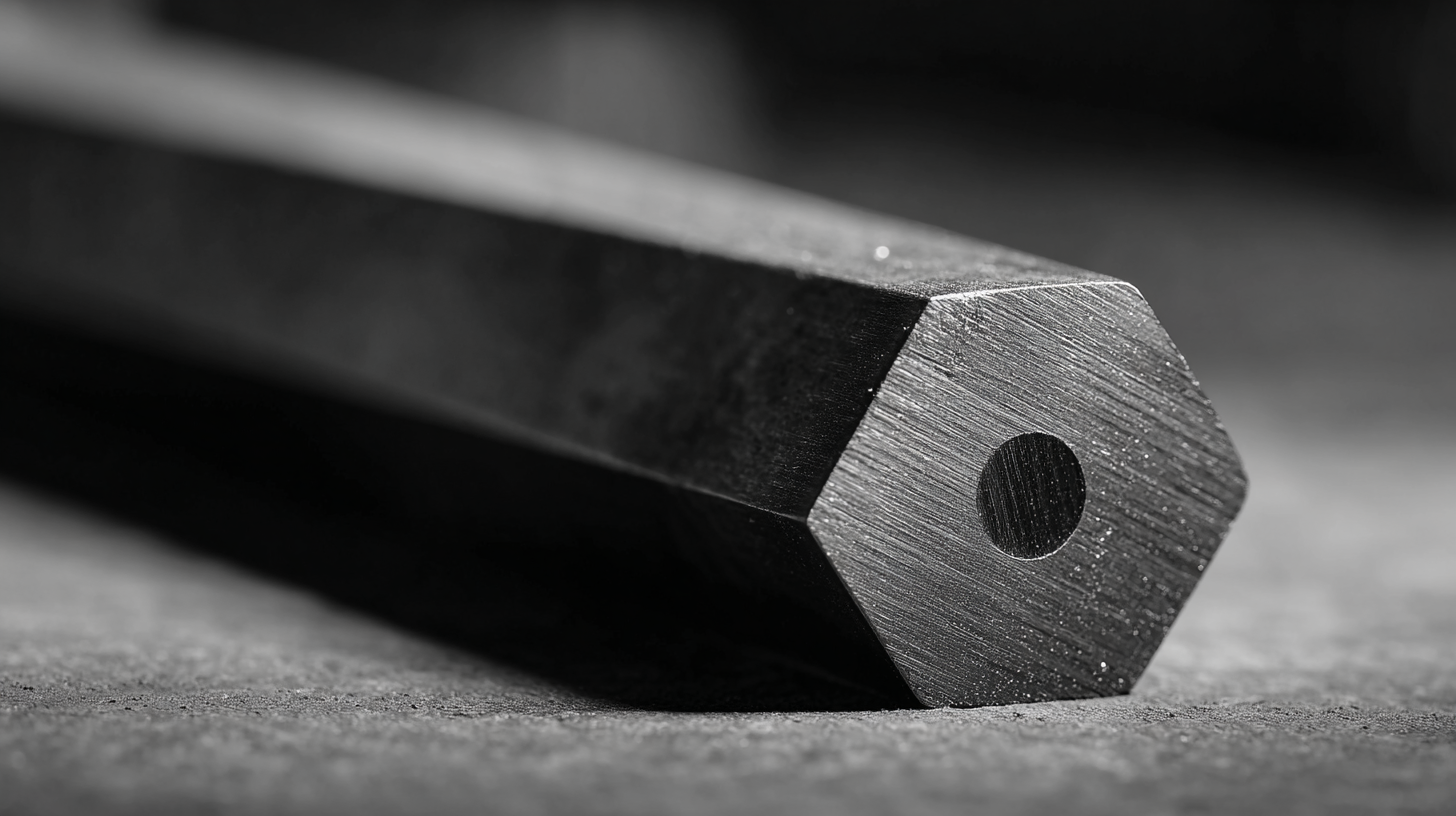Unveiling the Advantages of Choosing Graphite Paper over Carbon Paper for Your Projects
In today's fast-paced industrial landscape, the choice between Graphite Paper and Carbon Paper is critical for the efficacy and precision of various projects. Recent market analyses indicate a significant shift towards utilizing Graphite Paper due to its superior performance characteristics and versatility in applications ranging from technical drawing to crafting intricate designs. According to a report by MarketsandMarkets, the graphite paper market is expected to grow at a CAGR of 5.6% in the coming years, driven by increasing demand from sectors like electronics and automotive, where accuracy is paramount. This blog will delve into the advantages of Graphite Paper over Carbon Paper, exploring how its unique properties not only enhance the quality of outputs but also cater to the evolving needs of various industries. Through industry case studies and practical guidelines, we aim to provide a comprehensive understanding of why Graphite Paper is the preferred choice for modern project requirements.

Benefits of Graphite Paper: A Modern Solution for Creative Projects
Graphite paper has emerged as a modern solution for creative projects, offering distinct benefits over traditional carbon paper. One of the primary advantages is the clarity of transfer it provides. Graphite paper allows for finer details to be captured, ensuring that the intricate lines and textures of your original artwork are preserved. Whether you’re drafting designs, creating patterns, or adding detailed illustrations, graphite paper can help bring your visions to life with precision.

When working with graphite paper, one effective tip is to always use a light touch when applying pressure with your pencil or pen. This helps prevent smudging and ensures that only the necessary amount of graphite is transferred onto your project. Additionally, consider using different grades of graphite paper for varying effects; softer graphite papers provide a lighter touch, while denser grades yield darker, bolder lines for striking designs.
Another essential tip is to carefully select the surface you are transferring onto. Smooth surfaces work best for achieving clean lines, while textured surfaces can add an interesting dimension to your work. Experiment with various surfaces, such as canvas, wood, or thicker paper, to discover how they interact with the graphite transfer, enhancing the overall aesthetic of your project.
Comparison of Graphite Paper and Carbon Paper: Key Differences Unveiled
When choosing materials for various projects, understanding the distinctions between graphite paper and carbon paper can greatly influence the quality and outcome of your work. Graphite paper, made from pure graphite, offers smoother and more precise transfer, ideal for detailed design work. In contrast, carbon paper can smudge easily and may not provide the same level of clarity, particularly in intricate tasks such as sketching or creating blueprints.
**Tip**: If you aim for precision in your drawings or patterns, opt for graphite paper. Its cleaner transfer mechanism helps prevent the mess often associated with carbon paper. Additionally, using graphite paper can save time during the design phase, as it allows for clean, clear lines without the need for constant corrections.
Furthermore, with advancements in material technologies, such as those being explored in high-energy-density batteries and foam-based phase change materials, the key theme remains progress and reliability. This drives the need for superior performance in every aspect of a project.
**Tip**: Always test your materials on a small scale before committing to larger projects. This can help you better understand how each type of paper interacts with various mediums, ensuring optimal results for your artistic endeavors.
Versatility of Graphite Paper Across Various Art and Technical Fields
Graphite paper has emerged as a preferred choice in various artistic and technical disciplines, given its remarkable versatility. Unlike traditional carbon paper, graphite paper allows for a cleaner and more precise transfer of images and designs, which is essential for professionals in fields like graphic design, fine arts, and architecture. According to a report published by the International Society of Graphic Designers, over 70% of designers prefer graphite paper for its smudge-proof qualities and ability to create transfer images with sharp clarity. This adaptability is particularly beneficial for meticulous projects that demand accuracy and detail.

In educational settings, the use of graphite paper has been shown to enhance learning experiences in art and design classes. A study by the National Art Education Association highlights that students utilizing graphite paper demonstrated a 40% improvement in replicating complex designs compared to their experiences with carbon paper. This improvement can be attributed to the ease of use and superior quality of graphite transfers, encouraging students to engage more thoroughly in their creative processes. As the market for art supplies continues to evolve, the advantages of graphite paper are increasingly recognized across multiple industries, solidifying its place as an indispensable tool for artists and professionals alike.
Eco-Friendly Advantages of Choosing Graphite Paper for Sustainable Projects
Graphite paper is increasingly recognized as an eco-friendly alternative to traditional carbon paper in various projects, especially in contexts where sustainability is a priority. According to a report by the Green Chemistry Institute, carbon paper production often involves the use of harmful chemicals and generates significant waste, contributing to environmental degradation. In contrast, graphite paper is primarily made from natural materials, reducing the carbon footprint associated with its production. This shift to sustainable materials is crucial, especially considering that the global market for eco-friendly products is expected to grow by 10% annually, reaching over $150 billion by 2025.
Furthermore, the longevity and multi-use capabilities of graphite paper can enhance its sustainability profile. Unlike carbon paper, which typically can be used only once, graphite paper can be reused multiple times before it loses its effectiveness. A study published by the Journal of Environmental Management highlighted that reusable materials help cut down on landfill waste, aligning with circular economy principles. This makes graphite paper not just a practical choice for your projects, but also a step towards a greener future, illustrating how savvy consumers can contribute positively to the environment through informed purchasing decisions.
User Experiences: Why Artists Prefer Graphite Paper Over Traditional Carbon Paper
When it comes to transferring designs onto paper, many artists have shifted their preference from traditional carbon paper to graphite paper. User experiences reveal that graphite paper offers a more versatile and user-friendly approach to their projects. Unlike carbon paper, which can smudge easily and leave unwanted marks, graphite paper allows for precise and clean transfers. Artists appreciate the subtlety of graphite, as it can be erased effortlessly, allowing for adjustments and corrections without compromising the quality of the original work.
Additionally, artists have expressed admiration for the ability of graphite paper to produce fine lines and details, which traditional carbon paper often struggles to achieve. This is particularly advantageous for those working on intricate designs or delicate illustrations. Many users report that the smooth surface of graphite paper enhances their overall experience, making it less frustrating and more enjoyable. As a result, the transition to graphite paper has been embraced not just for its practicality but also for the enhanced creative freedom it provides, inspiring artists to explore new techniques and styles in their work.